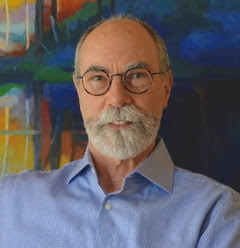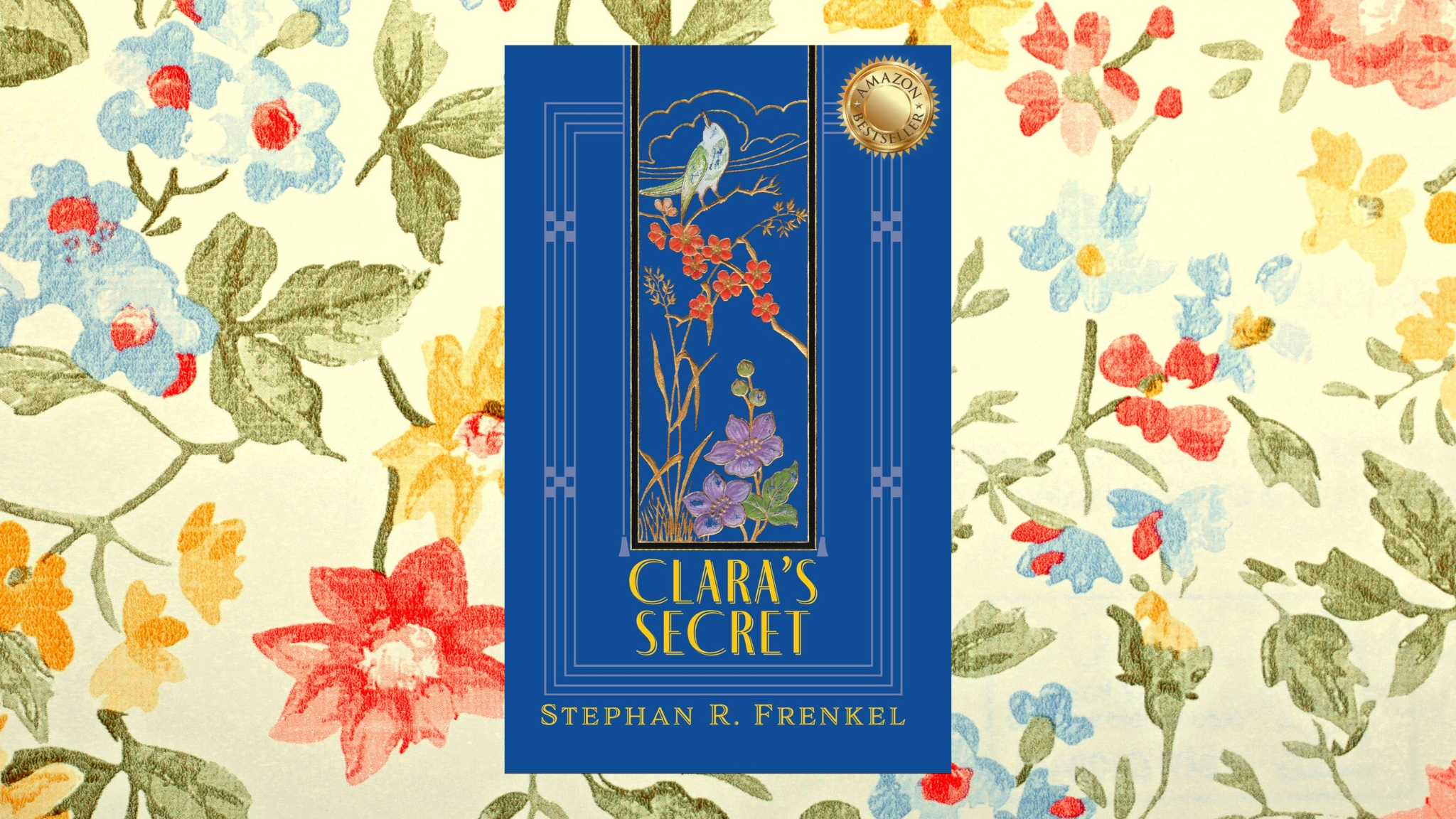Clara's Secret by Stephan R. Frenkel
What's It About?
"Clara’s Secret" is a poignant family story seamlessly integrated into the larger history of the Belle Époque, following the author's grandmother, Clara, a Prussian Jewish woman, from adolescence to emigration.A grandmother’s album of photographs and postcards reveals the Belle Époque in Berlin — a time of unrivaled promise, peace, and prosperity — through the eyes of a young Prussian Jewish woman, as told by her grandson Stephan R. Frenkel in Clara’s Secret (LAEV).
In 2016, Frenkel discovered an album of autographed pictures of celebrities from the late nineteenth and early twentieth centuries belonging to his paternal grandmother, Clara Prinz. Realizing Clara’s adolescence was shaped by the art, culture, and music of “the Beautiful Era,” Frenkel set out to chart her journey in the city of Berlin using the most famous personalities in her collection as a springboard into the past.
Coming-of-Age in a Flourishing Civilization
From 1901 to 1914, Europe experienced a civilizational flourishing in communication, culture, education, and technology across the capital cities of the Continent. Clara, born in 1890 Berlin, was in the prime of her adolescence during this “Promethean era” and came remarkably close to the “greatest talents of the world” as they visited the iconic Prussian capital. Eminent personalities like the American author Mark Twain, dance innovator Isadora Duncan, opera tenor Enrico Caruso, composer Richard Strauss and American President Theodore Roosevelt are only a few of those included in Clara’s album.
Frenkel uses a creative nonfiction approach that mixes distilled chapters of history recounting Berlin’s transformation over the centuries with Clara as the center point around which the narrative revolves. The “primary entry” in her album of memories was Mark Twain, who visited Berlin in the 1890s and whose autographed postcard Clara’s mother received at one of his salon presentations. For each character, the author provides entertaining biographical sketches on their lives and accomplishments, as well as their experiences in Berlin.
Clara was transfixed by the “evolutionary” dance of Isadore Duncan, who she saw perform at the New Royal Opera Theater in 1903. After the performance, Duncan gave personally autographed photographs of herself to Clara and a friend, who both treasured meeting the transformative artist. Clara found in Duncan’s free expression and provocative movements the encouragement to “dance freely to the sound of her own music.”
A Musician and Her Influences
Another visual memento of the brilliant era Clara grew up in was the autographed image of the tenor Enrico Caruso, who performed to a sold-out theater in 1906 Berlin. She was among a crowd of students who converged outside the Theater des Westens to get a glimpse of the famed opera performer. Frenkel recounts the magical moment when Caruso sang out the aria from the opera Martha from his dressing room window:
“As she stood a short distance from the theater window, Clara was able to hear Caruso’s voice above the hushed crowd … It brought tears to her eyes [and] the moment would never be erased from her heart.”
By 1907, the musically gifted Clara was a “consummate pianist” greatly influenced by the works of composer Richard Strauss, whom she spotted one day in a Berlin café. Along with the engaging stories of the postcard luminaries, Frenkel traces both the tangible and ethereal influences they had on his beloved grandmother. An accomplished pianist in her own right, Clara learned from Strauss “the dramatic power of music” and — as the dark curtain of National Socialism descended decades later —realized “when faced with human mortality, the immortality of music, no matter how beautiful or sensational, was eclipsed.”
Anti-Semitism and Forced Emigration
The rise of anti-Semitism across Germany eventually forced Clara’s emigration to the United States in 1939, painfully leaving behind her beloved Berlin, a city and culture she helped shape. Indeed less than two decades after the close of the La Belle Époque, Clara and many of those who contributed most to the development of Prussia, Germany, and Berlin would “lose their legal and human rights, and their long-earned respect.” In this way, Clara’s album became a treasured keepsake, something she could turn to for reassurance in troubling times as she “revisited the Beautiful Era of her adolescence, another place and time.”
Clara’s Secret is a poignant family story seamlessly integrated into the larger history of the Belle Époque, following Clara from adolescence to emigration, “a time of beauty to a time of condemnation.” Well-researched and engaging, Frenkel’s tribute to Clara encourages readers to search for their own family stories in the never-ending cycle of history. A wonderfully composed portrayal that could be considered narrative Art Nouveau.
About Stephan R. Frenkel:
 Stephan R. Frenkel is an accidental author. The subject of this book inspired him to write. He is a first-generation American born in New York City and raised in its northern suburbs. Steve attended the University of Wisconsin in Madison and received a Master’s Degree from the Washington University School of Architecture in St. Louis.
Stephan R. Frenkel is an accidental author. The subject of this book inspired him to write. He is a first-generation American born in New York City and raised in its northern suburbs. Steve attended the University of Wisconsin in Madison and received a Master’s Degree from the Washington University School of Architecture in St. Louis.
He worked in New York as an architect with Hellmuth, Obata + Kassabaum, the largest U.S.-based architecture and engineering firm, where he participated in international and national architecture and planning projects. Steve then worked as principal designer and land planner with a development company prior to founding a private architecture and planning practice on the East Coast. He independently continued to sponsor and produce large-scale land development projects. Steve currently lives with his wife in California. Clara’s Secret is an everlasting tribute to his most admired heroes.
Buy this Book!
Amazon




